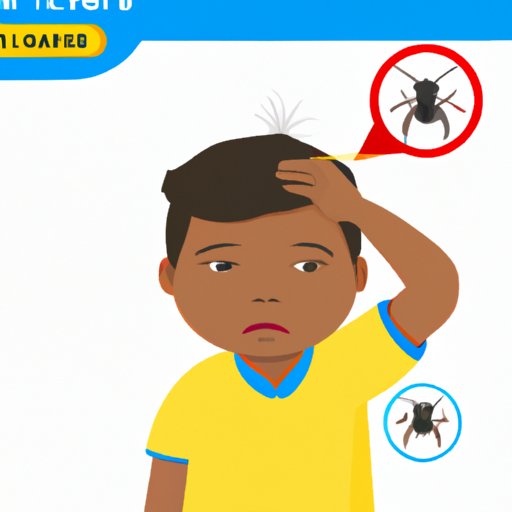
I. Introduction
Dealing with lice infestation can be a frustrating and uncomfortable experience that affects people of all ages and backgrounds. Lice infestation can cause itching, redness, and visible nits on the hair, and it can also significantly impact a person’s daily life. The goal of this article is to provide a comprehensive guide on how to know if you have lice, including symptoms, diagnosis, and treatment options that will benefit everyone concerned.
II. Signs and Symptoms of Lice Infestation
Lice are parasitic insects that typically attach to the hair and scalp and feed on human blood. Common signs and symptoms of lice infestation are itching, visible nits on hair strands, and sometimes red bumps on the scalp. Lice are incredibly contagious, and if left untreated, they can spread from person to person quickly.
III. Types of Lice
There are three main types of lice: head lice (Pediculus humanus capitis), body lice (Pediculus humanus corporis), and pubic lice (Pthirus pubis). While head lice live on the scalp and feed on human blood, body lice infest in clothing and bedding, and they only make contact with the skin when seeking a blood meal. Pubic lice mostly infest on hair in the pubic area and can quickly spread to other hair-bearing regions that they encounter.
IV. Diagnosing Lice Infestation
The tricky part of lice infestation is that, in some cases, lice can be hard to see, or the symptoms may be due to another condition. Fortunately, there are different methods for diagnosing lice infestation, including scalp and hair examinations or using a special comb. Examining the hair and scalp for lice can be done by following a few steps, which includes parting hair, positioning the light source, and inspecting the scalp carefully.
V. Preventing and Treating Lice Infestation
To prevent lice infestation, individuals should avoid sharing items such as hats and brushes, and avoid close contact with others who have lice. In case of lice infestation, several over-the-counter medications or professional treatments are available that aim to kill the adult lice or their eggs, and they usually involve shampoos or lotions containing insecticides or chemicals that smother the lice. It’s important to follow the instructions for using these treatments effectively and safely.
VI. Lice Infestation in Children
Children are more susceptible to lice infestation than adults, and the infestation can often spread rapidly in schools or camps. Parents and caregivers should check children regularly for lice and educate them about the proper use of personal items like hairbrushes and hats. If a child is diagnosed with lice infestation, parents can take steps like washing bedding and clothing thoroughly, and speaking with their healthcare provider for treatment advice.
VII. Lice Infestation in Adults
Although lice infestation in adults is less common than in children, it’s still prevalent, and it can happen through direct or indirect contact with someone who has lice. People who work with children, like teachers, childcare workers, and healthcare workers, are at a higher risk of getting lice. To prevent lice infestation, adults should avoid sharing combs, hats, and personal items, freshly launder bedding and clothing, and perform regular health checks.
VIII. Common Myths about Lice
There are several myths surrounding lice infestation, and these can lead to stigma and false beliefs about the condition. Some common myths include the belief that lice infestation is caused by poor hygiene, alternative treatments, or is common only in certain populations. It’s essential to debunk these myths and provide accurate information about lice infestation to increase understanding and reduce the impact of stigma.
IX. Conclusion
In conclusion, knowing how to identify and treat lice infestation is crucial to prevent its spread and minimize discomfort for individuals concerned. By following the steps outlined in this article, you can learn how to recognize the signs of lice infestation and take effective steps to manage and treat the condition. Stay informed, and always speak with a healthcare provider for advice and support.





